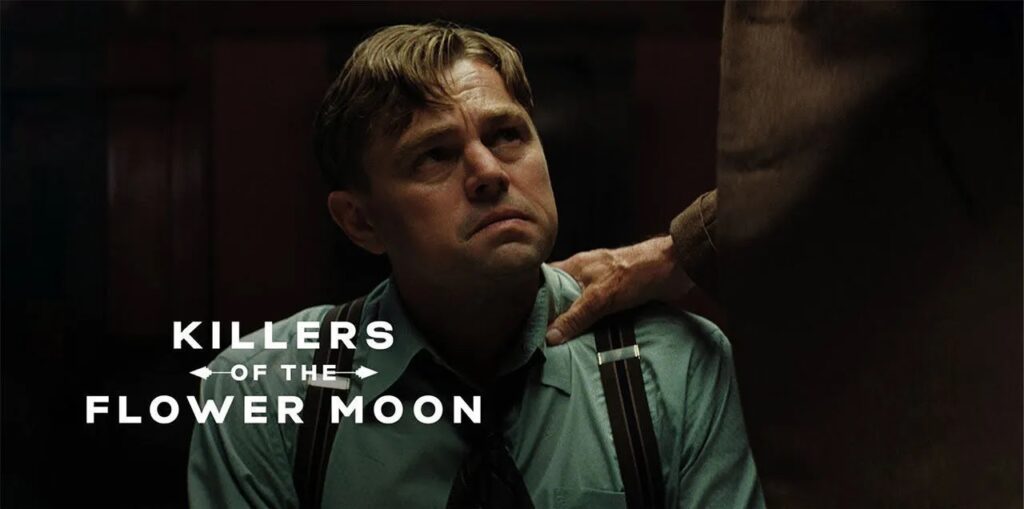
Killers Of The Flower Moon: Where Politics and Irony Meet
Recently American Cinema came with its much awaited film ‘Killers Of The Flower Moon’. Directed by legendary Martin Scorsese, the film focuses on the real-life murders that took place in the early 1900s in the Osage area the USA. Highlighting on the Native Indian community, the film’s release time is actually apt when the matters of land acquisition and ethnic cleansing have been on the rise in the recent past. After wowing the audience at the Cannes Film Festival this year during its premiere, the film graced Indian screens last week. Since then, the critics and audience have been in awe of the film. But what is worth noting that the film boasts of important political themes with loads of irony. So how does it depict them?
Set in the 1920s at the Osage region of America (USA), the film starts off with the Osage Native Indians performing a ritual and discovering oil in their area. Following this, their community becomes wealthy in such a manner that they have the white people working either with them or for them. Here we see the capitalistic approach of rich White Americans and their ways to have their share in the natural gifts that the Native Indians possess. In this pursuit, the American court grants them ‘Guardians’ for managing the wealth possessed by the Native Indian Americans. Some of these ‘Guardians’ however, go against the protocol by killing some of the family members in order to snatch the wealth. Now if we go by the history, it is a clear example of ‘Westward Expansion’ where the British and their descendants (the so-called White Americans) amalgamated into the American scenario and show their real colors in the form of capitalism and ethnic cleansing of Native Indian Americans. This pretty matches up with what the British did in India and every part of the world which they made their colony. If we see in the present scenario, the themes add well to the ongoing conflict at West Asia, Africa and in other parts of the world too. It is also similar to the level at which America as a nation has been doing after World War II in Korea, Vietnam, Libya, Iraq and even Afghanistan, where they bring their army to ‘save the world’, but ironically to snatch the resources and lands.
We see the first half of the film from the perspective of the character of Ernest played by Leonardo DiCaprio who has just returned from the World War I (1914-1919) and he works as a cab driver under his uncle, the gang lord William King Hale (played by Robert De Niro). Here, one could witness the similarities in DiCaprio’s character with that of De Niro’s character of Travis Bickle in the film ‘Taxi Driver” (directed by Scorsese himself) where the latter is a Vietnam War veteran who returns to be a cab driver. Not many know that Di Niro’s character is widely believed to be an inspiration from the lead character of ‘Abhijaan’ (1962/ Bengali/ Satyajit Ray)! However, there is a contradiction in both narration. While the former is up to going against the system, the latter tries to clean it. Furthermore, the makeup and mannerisms of DiCaprio’s character maybe a reminiscent of Marlon Brando in his latter years for many. This is pretty ironical as Brando always supported the cause of Native Americans. Whereas De Niro’s character is a representative of the capitalists’ class who can gently go into any extent for the pursuit of acquiring wealth. The same process that many industrialists and the rich have done in the world.
Interestingly, the film also brings light to two important matters which laid the ground for global history : The Ku Klux Klan and the FBI (Federal Bureau of Investigation). For the former, in one of the scenes in the film, we see their tableau following that of the Native Indian Americans as sign of protests and as a mark of forthcoming ‘White Supremacy’. Whereas for the latter, there is a very smart placement of characters in the final 45 minutes who are introduced as representatives of the Federal Government, that gently transit into one scene where their real ‘trade’ is revealed. They arrive on the insistence of the lead female character Mollie (played by Lily Gladstone), who actually begs the authorities at Washington D.C. for investigating the Osage murders. Without any thrills or so, the makers transit subtly to show the arrival of the ‘good guys’ by placing them at the right places in the film’s second half and then bringing them together in one scene for their further plan . Another thing worth noting in the film is about some of its dialogues aiming at Jewish community where they are compared as blind capitalists. This may go well with many, due to the ongoing conflict at West Asia, with Israel, the major country with Judaism (Jew) as its primary religion, gaining major criticism. Now it maybe even more ironical for a country like America as the Jewish community in Israel followed almost the same pattern in their area, the way the British and their ‘White American descendants’ did during the Westward Expansion in America.
What is also worth noting is the background score (Robbie Robertson), which is a combination of Native American folk music (mostly percussion-based) and bass strings based soundtrack to enhance the momentum. The use of silence in most of the scenes in the film makes it more effective. The cinematography (Rodrigo Prieto) is actually rich and the color palette is reminiscent of films like ‘The Godfather-II’ and ‘There Will Be Blood” which matches beautifully with the characters and the scenes. The film also is a winner in intimately showcasing the Native Indian American community, along with its rituals and lifestyle, thus making the production design work (Jack Fisk) a success.
This year American Cinema has dug deeper into the pages of its history, bringing those stories which are NOT showing them as ‘world saviors’ like what most of its popular films have been doing for the last three decades. They come out with imperfect characters with perfect intentions, under the stories which are barely being talked about and the themes which are heavily relevant in today’s times. ‘Oppenheimer’, ‘The Burial’ and ‘Killers Of The Flower Moon’ are such examples in the recent past. Ironically, these films come from that very country which is an epitome in going against the statement that it has been making cinematically this year!
Disclaimer: The above review solely illustrates the views of the writer.


